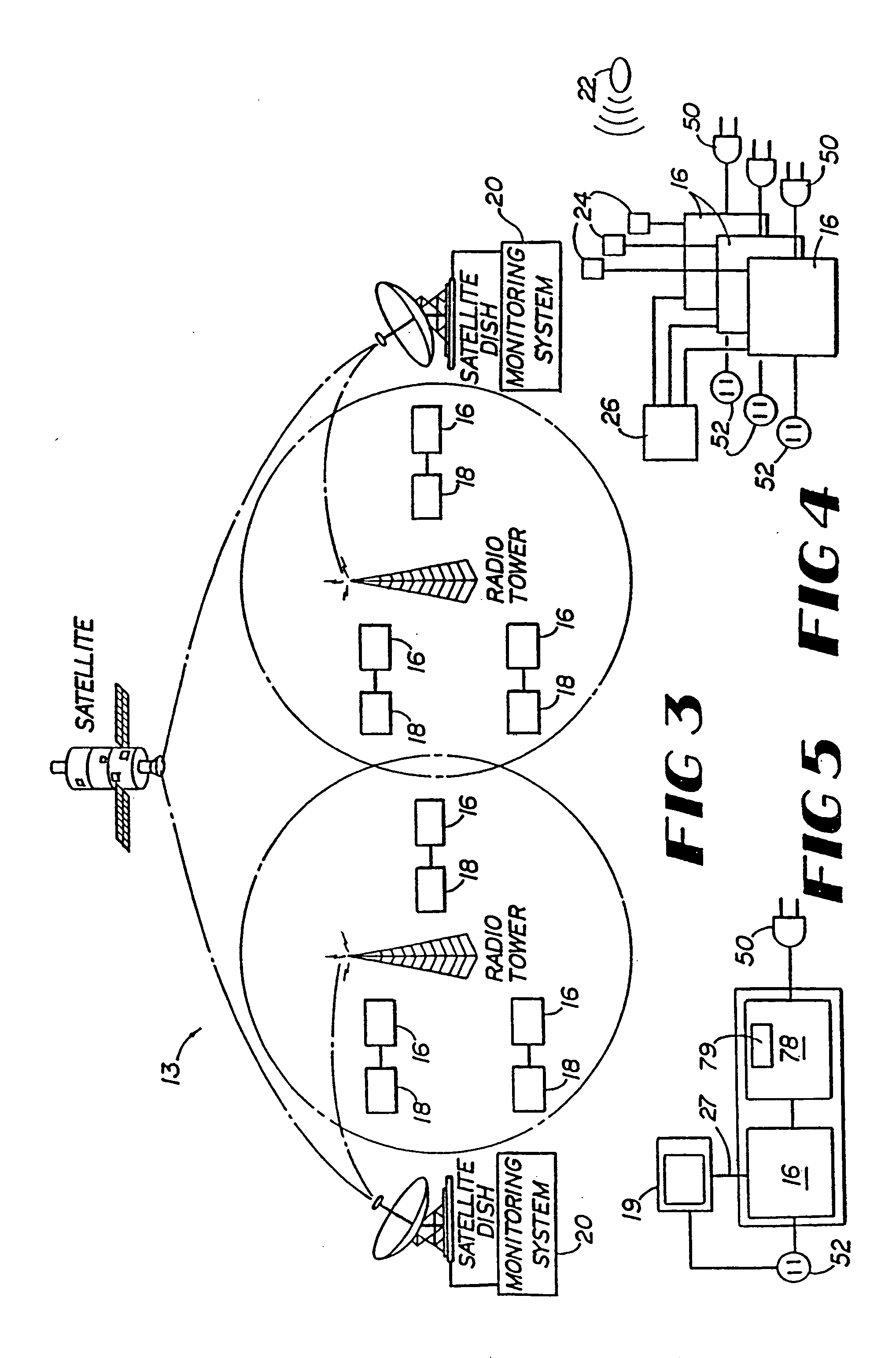Monitoring and response system
a technology of monitoring and response system, applied in emergency protective arrangements, switches, instruments, etc., can solve problems such as damage to windows, data loss and damage to electronic equipment, and potentially dangerous and/or harmful effects
- Summary
- Abstract
- Description
- Claims
- Application Information
AI Technical Summary
Benefits of technology
Problems solved by technology
Method used
Image
Examples
Embodiment Construction
[0036]FIGS. 1-3 show monitoring and response systems 10, 11 and 13 respectively according to certain embodiments of the present invention. As shown in FIG. 1, monitoring and response system 10 includes a plurality of monitoring devices 14 adapted to detect or monitor at least one condition, a plurality of regional transmitters 12 communicatively associated with the monitoring devices 14, and a plurality of automatic response devices 16 adapted to receive signals from the regional transmitters12 and to perform certain functions. In other embodiments, such as the embodiments shown in FIGS. 2 and 3, a single monitoring device 20 replaces the plurality of monitoring devices 14 shown in FIG. 1. In still other embodiments, monitoring and response systems 10, 11 and / or 13 may include both types of monitoring devices 14 and 20.
[0037] Monitoring devices 14 and / or 20 may monitor any desired and / or appropriate condition, conditions, precursor condition or precursor conditions. For instance, m...
PUM
 Login to View More
Login to View More Abstract
Description
Claims
Application Information
 Login to View More
Login to View More - R&D
- Intellectual Property
- Life Sciences
- Materials
- Tech Scout
- Unparalleled Data Quality
- Higher Quality Content
- 60% Fewer Hallucinations
Browse by: Latest US Patents, China's latest patents, Technical Efficacy Thesaurus, Application Domain, Technology Topic, Popular Technical Reports.
© 2025 PatSnap. All rights reserved.Legal|Privacy policy|Modern Slavery Act Transparency Statement|Sitemap|About US| Contact US: help@patsnap.com



